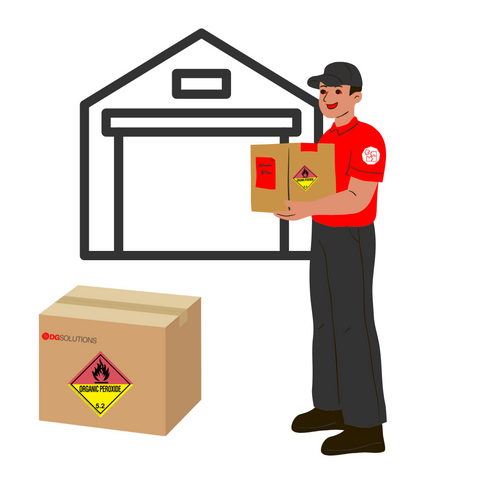
Class 5.2 Dangerous Goods – Organic Peroxides
Class 5.2 covers organic peroxides. These chemicals contain a special oxygen–oxygen bond that makes them unstable and highly reactive. Because of this, they can catch fire or even explode if not handled properly.
Common UN Numbers for Class 5.2
Some well-known examples include:
- UN 3105 – Organic Peroxide Type D, liquid (e.g. Methyl Ethyl Ketone Peroxide – MEKP)
- UN 3107 – Organic Peroxide Type D, solid (e.g. Benzoyl Peroxide formulations)
- UN 3110 – Organic Peroxide Type E, liquid
- UN 3111 – Organic Peroxide Type E, solid
- UN 3115 – Organic Peroxide Type F, liquid
(Each type – A through G – shows how dangerous the product is. A = too dangerous to transport, G = low risk.)
Key Points to Know
- Unstable by Nature: They decompose easily, releasing heat and gases. If not controlled, this can lead to fire or explosion.
- Storage: Keep them cool, away from direct sunlight, heat, sparks or any ignition source. Some need refrigeration.
- Separation: Always store away from flammables, acids, bases and other incompatible goods.
Use in Industry: Commonly used for making plastics, resins, and composites.
Personal Safety: Wear gloves, goggles, and protective clothing when handling.
Transport in NZ
Transport is strictly controlled under:
- NZS 5433 – Transport of Dangerous Goods on Land
- Land Transport Rule: Dangerous Goods 2005
- Plus international rules for air (IATA) and sea (IMDG).
Organic peroxides (Class 5.2) are useful but dangerous. Keep them cool, handle with care, follow the rules, and always check the Safety Data Sheet (SDS) for the exact requirements of each product.
